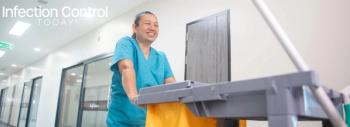
Barnes-Jewish Hospital Chooses Dornoch System for Infectious Fluid Waste Disposal
Dornoch Medical Systems Inc. is providing the infectious fluid waste management system for the $95 million operating room renovation project at Barnes-Jewish Hospital in St. Louis. The first phase of what Barnes officials say is the nations most ambitious OR renovation was opened Jan. 5.
Transposal safely and affordably disposes of liquid infectious fluids through a system that is flexible and easy to adopt facility-wide, which is why the leadership at Barnes-Jewish Hospital selected it, said Dornoch President Gary Mostow. Barnes is one of the nations best hospitals, according to numerous industry analysts, so were especially gratified theyve chosen Transposal for their new state-of-the-art facilities.
Barnes-Jewish Hospitals project will provide 28 new ORs and a 21-bed cardiothoracic intensive care unit for the hospital, which has 16,000 surgeries annually. The new ORs will be large enough to accommodate new technologies such as multiple flat screens to display MRIs, CT scans and other diagnostic images. BJC HealthCare of St. Louis owns the hospital.
Dornoch's infectious fluid waste management systems help address a significant national environmental challenge. More than 50 million suction canisters, representing some 225 million pounds of infectious waste, are disposed of annually.
Fluids collected during surgery present an expensive disposal challenge. Though infectious waste represents only about 20 percent of all hospital waste, infectious waste accounts for more than 75 percent of disposal costs.
Additionally, OSHA, EPA and DOT regulations are increasing administrative burdens associated with infectious waste, particularly relating to employee exposure, transportation and final disposal. Those regulations and safety concerns have led more than two-thirds of U.S. hospitals to eliminate the practice of pouring infectious fluid wastes into a drain, according to a survey by Dornoch. Company officials say that, while some hospitals have adopted either capping or solidifying, many are finding the Dornoch solutions to be preferable.
Source: Dornoch
Newsletter
Stay prepared and protected with Infection Control Today's newsletter, delivering essential updates, best practices, and expert insights for infection preventionists.






